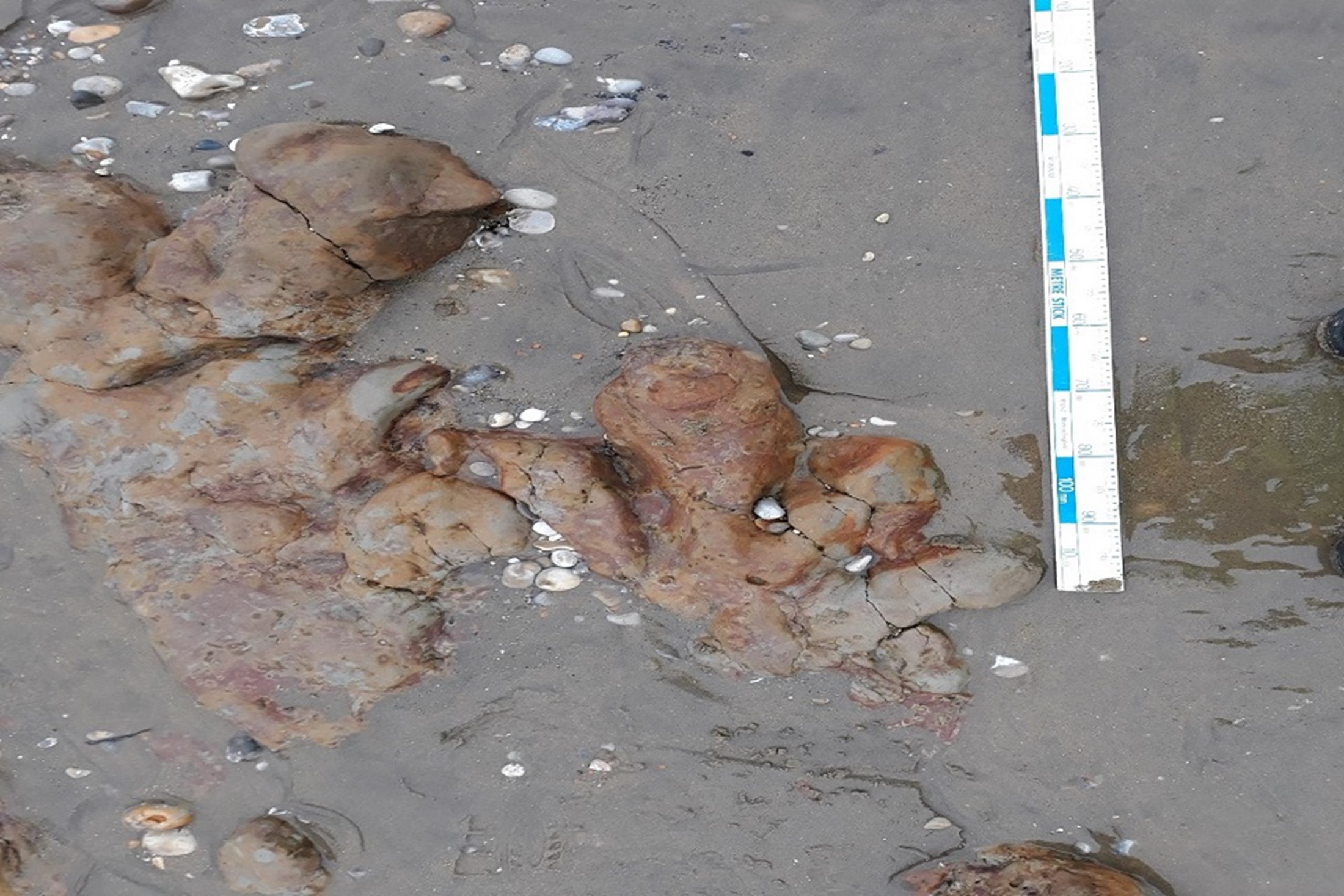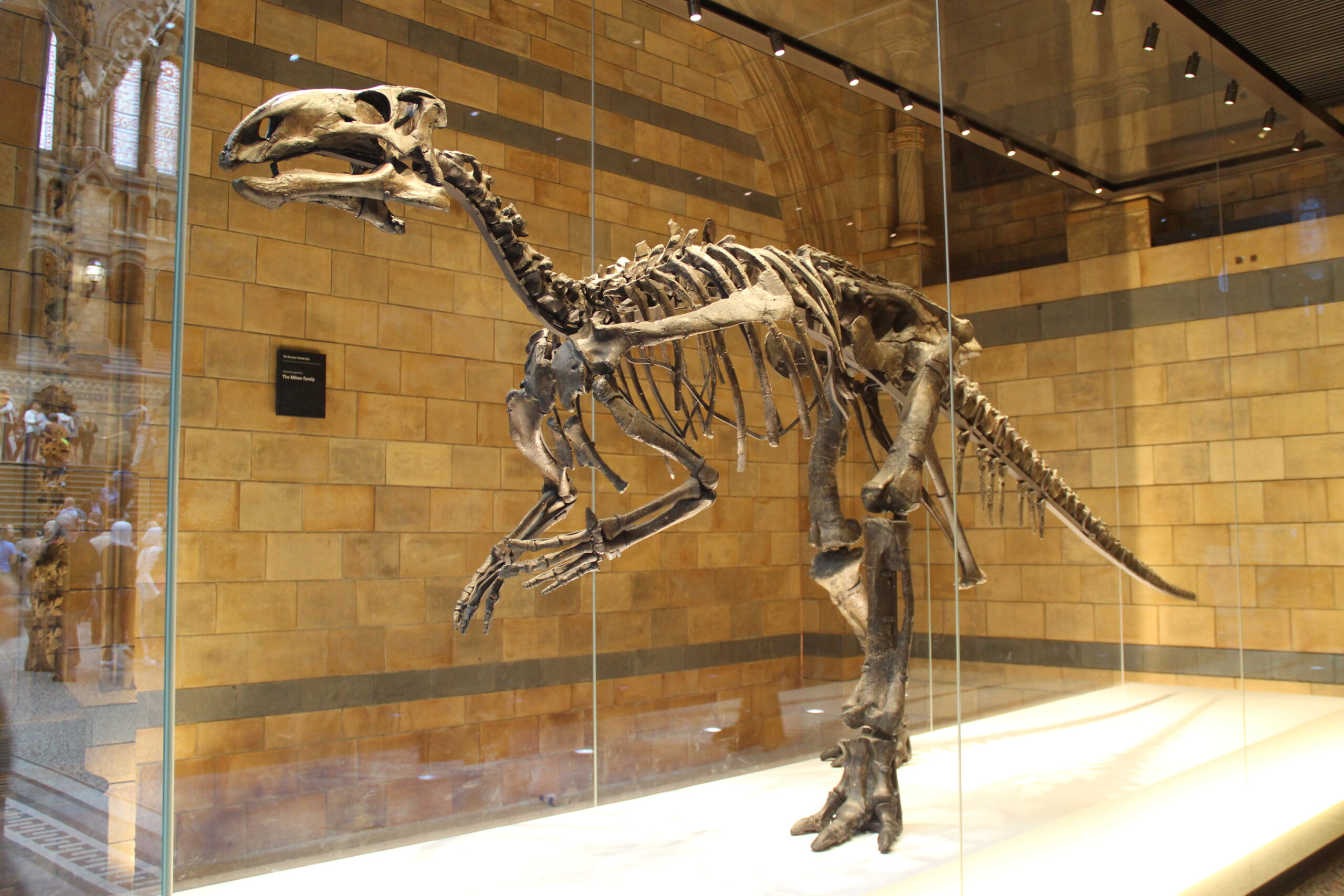Enhancing coastal resilience at Yaverland and Shanklin
This exciting discovery was revealed during our work with the Environment Agency to deliver coastal flood protection at Yaverland and Shanklin. The project involves refurbishing 1.2 km of coastal defences in Yaverland and Sandown, as well as 900 m of coastal defences in Shanklin, to mitigate the effects of flooding and coastal erosion over the next 50 years.
- Client Environment Agency
- Location Yaverland and Shanklin
- Services
Coastal works uncover hidden dinosaur tracks
During early ground investigations to inform the design of coastal defence upgrades at Yaverland, large dinosaur footprints estimated to be around 125 million years old were uncovered along the beach seafront. The investigations we carried out on behalf of the Environment Agency formed part of the preparatory work for a wider flood and coastal erosion risk management scheme.
Due to the area's significant paleontological importance, a team from the local Dinosaur Isle Museum was present to document the findings after several similar markings had been discovered in recent years. The remains had been hidden beneath the surface until exposed by the survey works, indicating that the footprints were in a layer of mudstone underneath the sand that stretches the entire length of the beach at Yaverland.
And that’s not all, a previously unknown type of carnivorous dinosaur (T-rex) has also been found on Shanklin washing out of the cliff.
As the project progresses with enhancements to the coastal defences, further intriguing discoveries are expected, and both areas will remain under observation. On behalf of the Environment Agency, in collaboration with the British Geological Survey, we will be designing protocols for a new model for palaeontological investigations of fossils uncovered during large-scale land-improvement projects. This will be developed during the undertaking of the works by Volker Stevin, as monitored on the ground by the Dinosaur Isle Museum.
Dr Martin Munt, curator of the Dinosaur Isle Museum at Sandown said:
"The Isle of Wight is the richest dinosaur location in Europe, but this is still a wonderful find. We have located 35 different types of dinosaurs, and the area was once also heavy with plants, crocodiles, pterosaurs, amphibians, fish and invertebrates like insects and freshwater mussels.
We cannot be totally sure about a print’s identity, but the 3-toed feet makes it likely a Mantellisaurus was here, not just in other parts of the south coast where they were more common – or that’s what we thought until now."
The Isle of Wight’s Jurassic past uncovered
A fully-grown Mantellisaurus would have been almost twice the length of an average car, marching a slow thunder with huge strides that have clearly left their mark on time.
The Mantellisaurus hit the scales at 750 kilograms, and unlike other breeds, they got about on their hind legs like an ostrich, but probably not as quickly and only on all fours when standing still or moving slowly.


The Mantellisaurus skeleton on display at the Natural History Museum is one of the most complete dinosaur skeletons in the UK. It was discovered on the Isle of Wight in 1917, an area that was once a perfect habitat for dinosaurs, generating a diverse collection of bones and fossils over millennia, and providing an impressive roll call for scientists to explore.
The latest find cements firmly the Isle of Wight as Britain's dinosaur capital. The reptile reveals why the rocks known as the Wessex Formation have become a magnet for geologists and palaeontologists alike.

If you have a similar project with a palaeontological requirement, contact our heritage team. Or to find out more about our broader offerings, click here.



